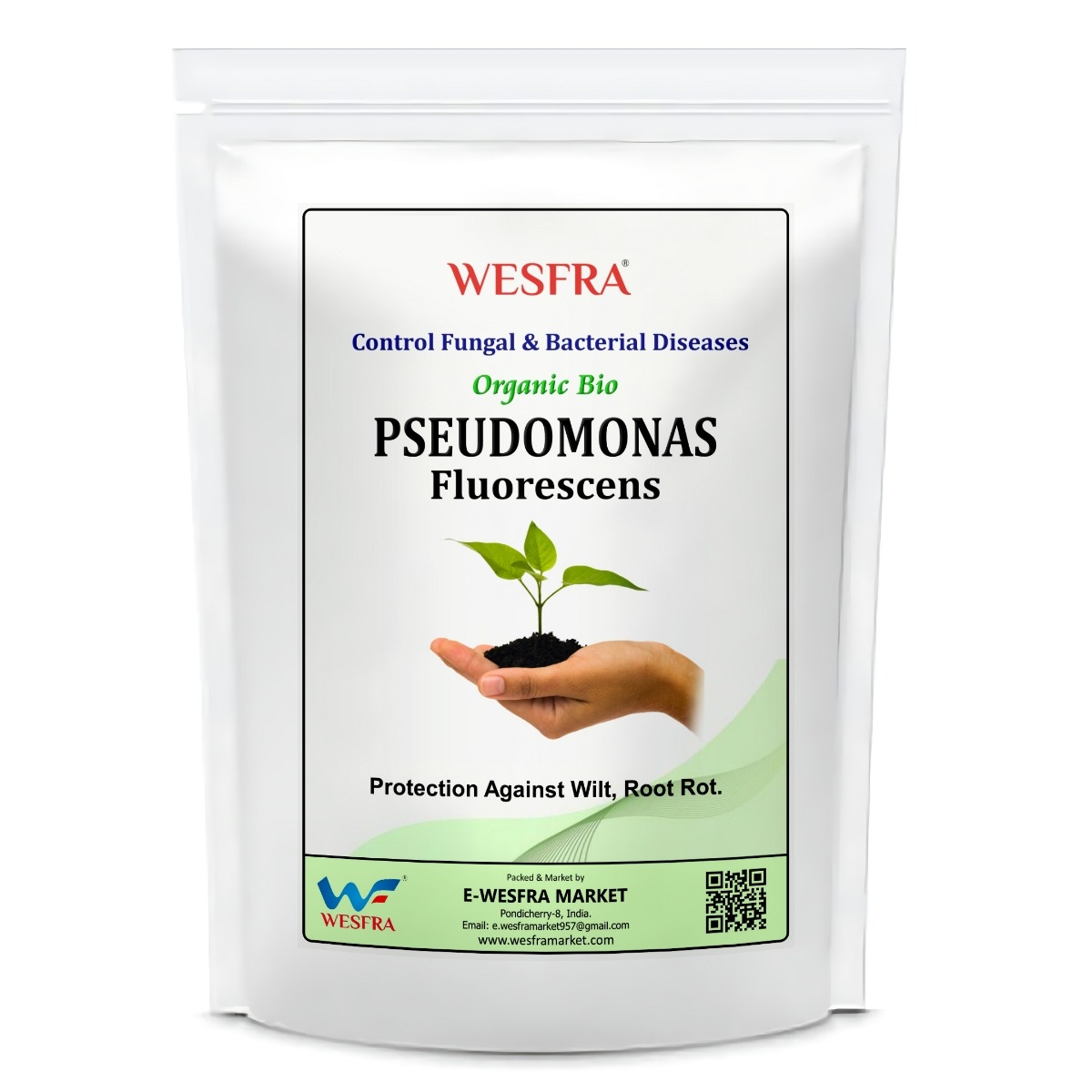
 Search
Search Language
LanguageLanguage
- 0
 Cart
Cart
1. Agriculture:
2. Terrace gardening:
3. Home Gardening:
This eco-friendly approach is suitable for a wide variety of crops and plants, whether in large-scale farms or home and terrace gardens.
Pseudomonas fluorescens powder is a dry, powdered form of the bacterium Pseudomonas fluorescens. It is typically produced for agricultural or biotechnology applications.
Pseudomonas fluorescens powder can be used for various purposes, including: Biological control of plant diseases: Some strains of Pseudomonas fluorescens are known to produce antimicrobial compounds that can suppress the growth of plant pathogens. Bioremediation: Certain strains of Pseudomonas fluorescens have the ability to degrade pollutants and contaminants in soil and water. Plant growth promotion: Pseudomonas fluorescens can enhance plant growth through mechanisms such as nutrient solubilization and hormone production.
Pseudomonas fluorescens powder can be mixed with water and applied as a soil drench or foliar spray to protect plants from fungal and bacterial diseases. It can also be used as a seed treatment to promote healthier seedlings.
Generally, Pseudomonas fluorescens is not considered harmful to humans. It is a common environmental bacterium and is not known to cause diseases in healthy individuals. However, like any bacterial product, it should be handled and applied with proper safety precautions.
Yes, there are many strains of Pseudomonas fluorescens, and some are more effective for specific purposes than others. Different strains may have varying abilities to control plant diseases or promote plant growth.
Pseudomonas fluorescens strains can help break down pollutants, such as hydrocarbons and heavy metals, in contaminated soil and water. This can contribute to environmental cleanup and restoration efforts.
- Users should follow the manufacturer's instructions for handling and application. It's important to store the powder in a cool, dry place and avoid exposure to high temperatures or direct sunlight. Additionally, users should wear appropriate personal protective equipment when handling and applying the product.
Pseudomonas fluorescens produces secondary metabolites such as antibiotics and enzymes that can inhibit the growth of plant pathogens. These beneficial bacteria can also outcompete harmful microorganisms for space and nutrients on plant surfaces, further reducing the risk of disease.
Yes, Pseudomonas fluorescens is often considered a compatible choice for organic farming and sustainable agriculture practices. It provides a natural and non-chemical approach to disease management and plant growth promotion.
The shelf life of Pseudomonas fluorescens powder can vary depending on the manufacturer and the specific formulation. It is essential to check the product label or consult with the supplier for information on storage conditions and shelf life.
While Pseudomonas fluorescens can be beneficial, its effectiveness can depend on factors such as environmental conditions, the specific strain used, and the target plant pathogen. It may not always provide complete control of diseases and may need to be used in conjunction with other disease management strategies.
Yes, Pseudomonas fluorescens can be used in hydroponic and aquaponic systems to promote plant health and protect against root diseases. However, proper application methods should be followed to ensure compatibility with these systems.
Regulations regarding the use of Pseudomonas fluorescens in agriculture can vary by country and region. In some cases, specific formulations may need to be registered or approved by local agricultural authorities. Always check with local agricultural extension services or regulatory agencies for guidance.
Pseudomonas fluorescens can sometimes be used in integrated pest management (IPM) programs alongside chemical pesticides. However, compatibility and timing of application should be carefully considered to avoid any negative interactions.
Pseudomonas fluorescens is generally considered safe for beneficial insects and pollinators because it primarily targets plant pathogens. However, as with any agricultural product, it is essential to follow recommended application rates and timings to minimize potential impacts on non-target organisms.